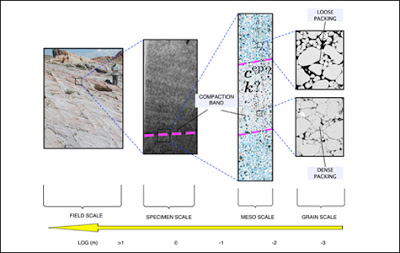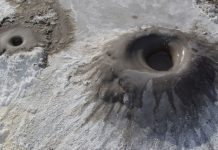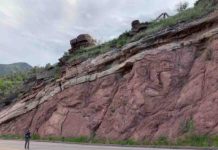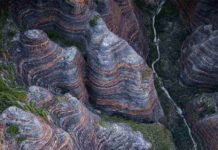
When geologists survey an area of land for the potential that gas or petroleum deposits could exist there, they must take into account the composition of rocks that lie below the surface. Take, for instance, sandstone-a sedimentary rock composed mostly of weakly cemented quartz grains. Previous research had suggested that compaction bands-highly compressed, narrow, flat layers within the sandstone-are much less permeable than the host rock and might act as barriers to the flow of oil or gas.
Now, researchers led by José Andrade, associate professor of civil and mechanical engineering at the California Institute of Technology (Caltech), have analyzed X-ray images of Aztec sandstone and revealed that compaction bands are actually more permeable than earlier models indicated. While they do appear to be less permeable than the surrounding host rock, they do not appear to block the flow of fluids. Their findings were reported in the May 17 issue of Geophysical Research Letters.
The study includes the first observations and calculations that show fluids have the ability to flow in sandstone that has compaction bands. Prior to this study, there had been inferences of how permeable these formations were, but those inferences were made from 2D images. This paper provides the first permeability calculations based on actual rock samples taken directly from the field in the Valley of Fire, Nevada. From the data they collected, the researchers concluded that these formations are not as impermeable as previously believed, and that therefore their ability to trap fluids-like oil, gas, and CO2-should be measured based on 3D images taken from the field.
The research team connected the rocks’ 3D micromechanical features-such as grain size distribution, which was obtained using microcomputed tomography images of the rocks to build a 3D model-with quantitative macroscopic flow properties in rocks from the field, which they measured on many different scales. Those measurements were the first ever to look at the three-dimensional ability of compaction bands to transmit fluid. The researchers say the combination of these advanced imaging technologies and multiscale computational models will lead to unprecedentedly accurate measurements of crucial physical properties, such as permeability, in rocks and similar materials.










